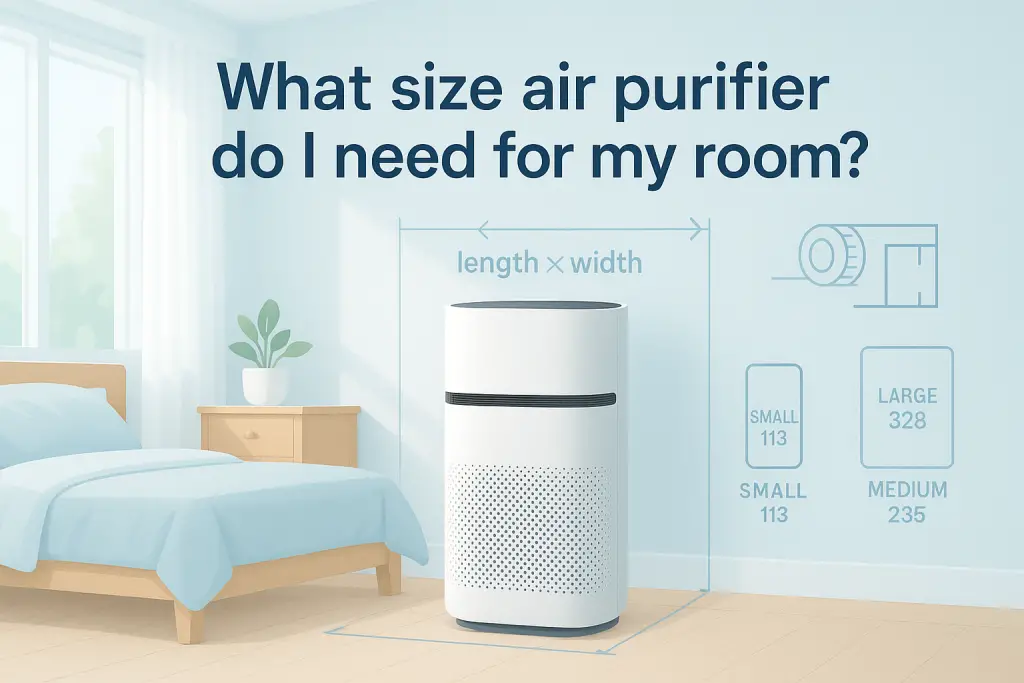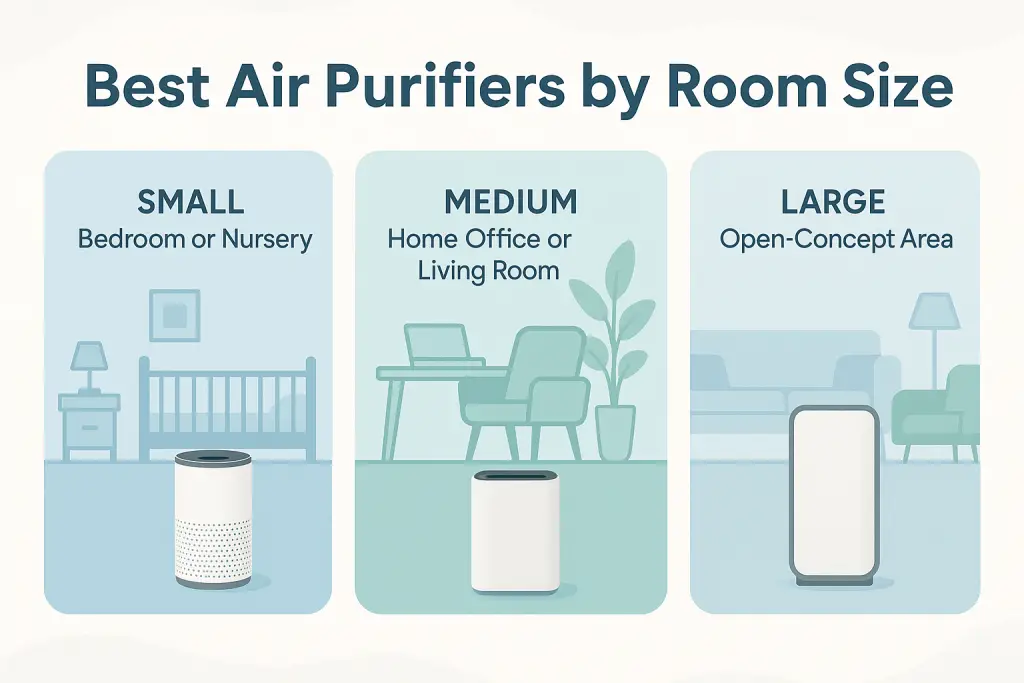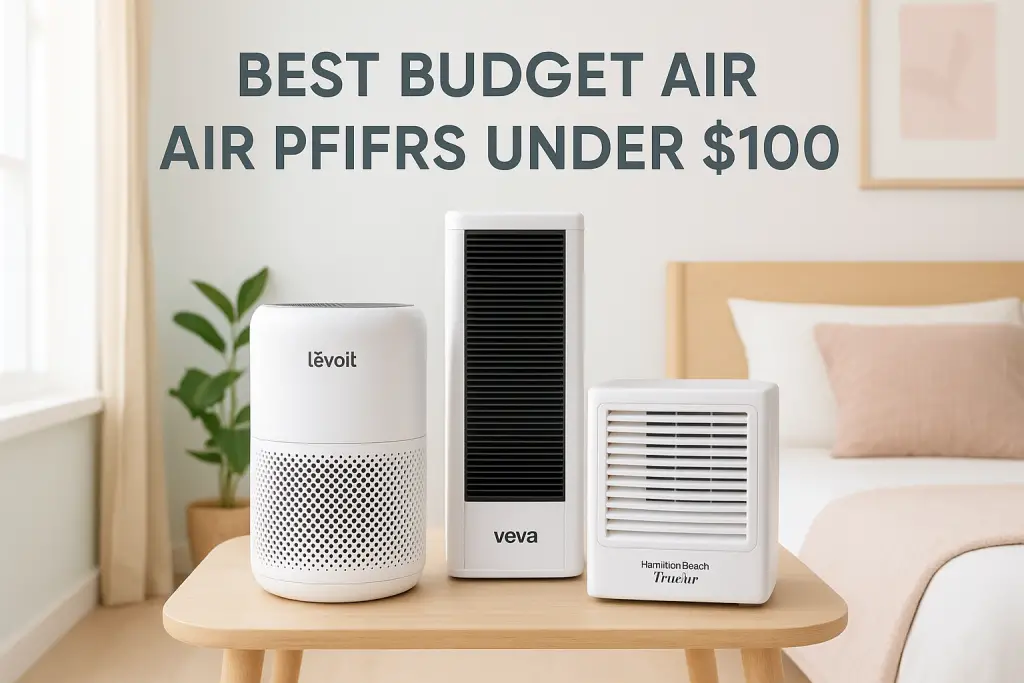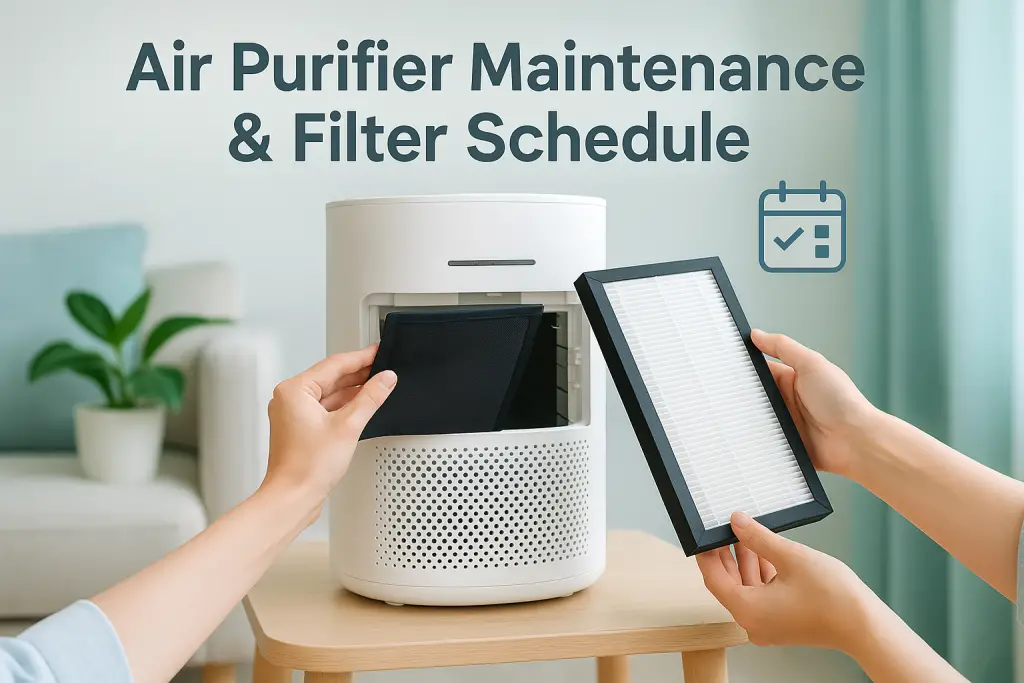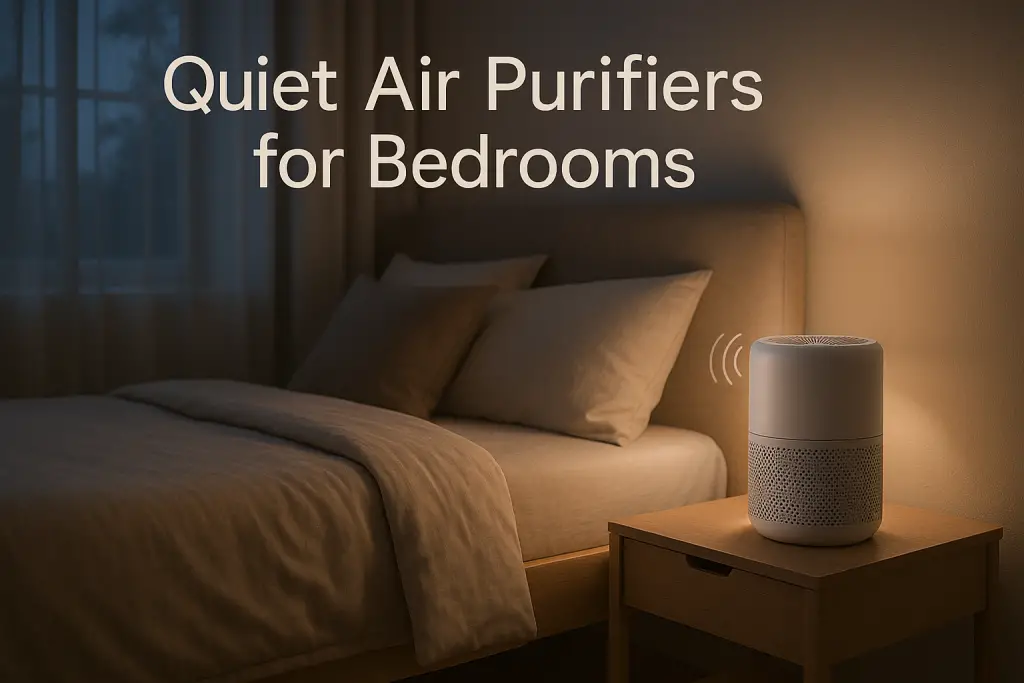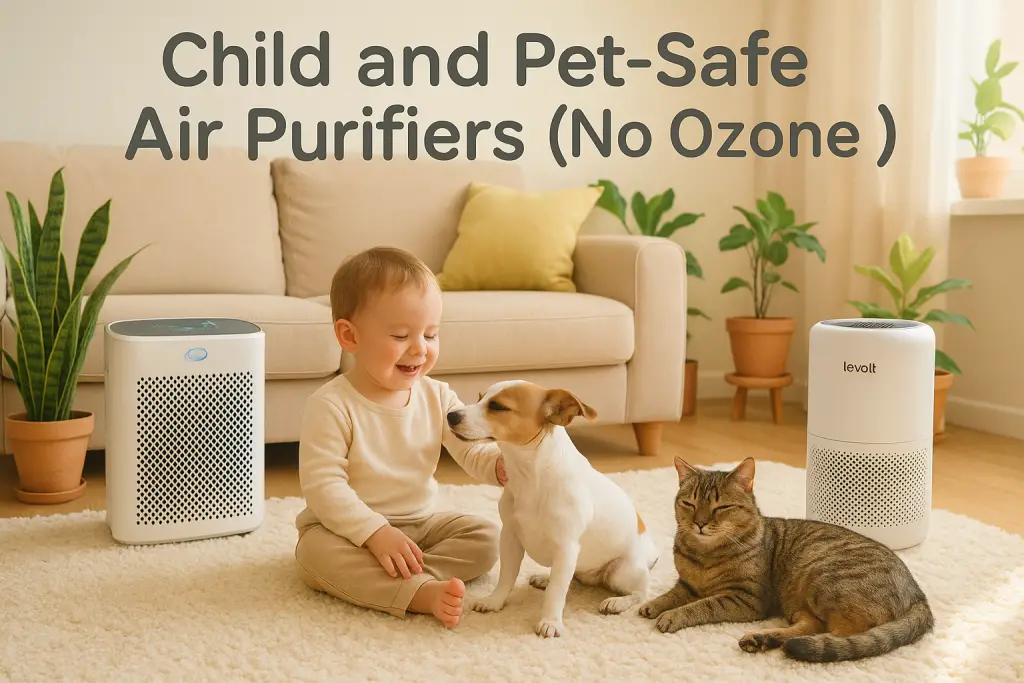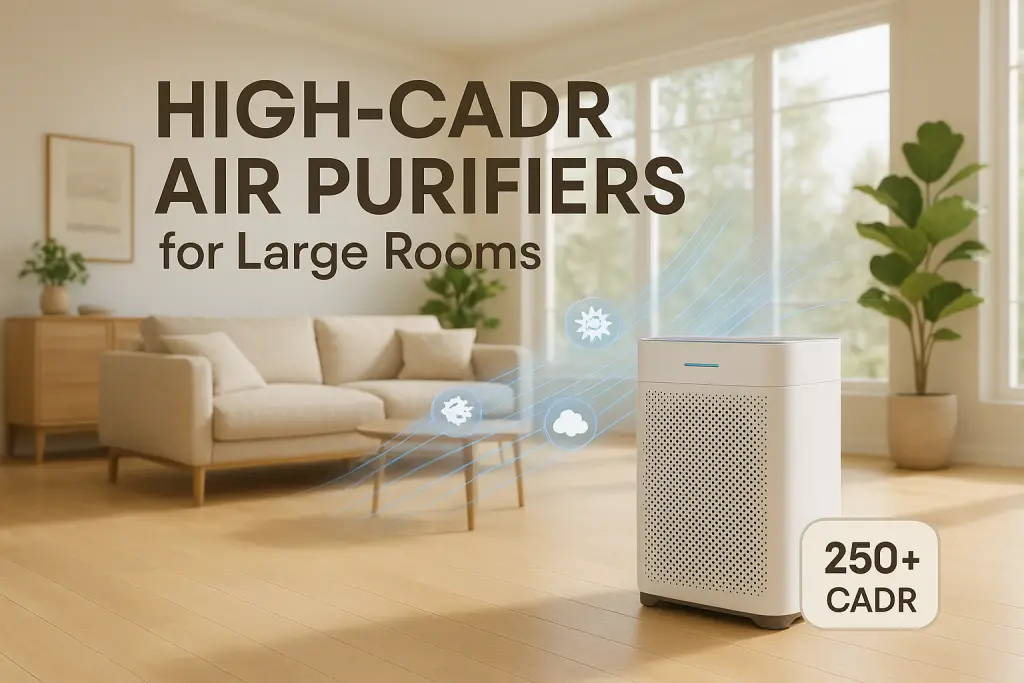Choosing the correct air purifier size for your room is essential for effective air cleaning. An air purifier that’s too small won’t adequately clean your air, while one that’s too large might waste energy and cost more than necessary. This guide will help you determine the right size air purifier based on your room dimensions, specific air quality concerns, and other important factors.
What Size Air Purifier Do I Need for My Room?
The size air purifier you need for your room primarily depends on your room’s square footage. As a basic rule, you need an air purifier with a Clean Air Delivery Rate (CADR) that can handle your room’s size. For general purposes, divide your room’s square footage by 1.55 to get the minimum CADR rating needed. For example, a 200 square foot room would require an air purifier with a CADR of at least 129.
However, this basic calculation is just a starting point. Several other factors affect the air purifier size you need:
- Ceiling height (rooms with ceilings higher than 8 feet need more powerful units)
- Air quality concerns (allergies, pets, smoke)
- Room usage (bedrooms vs. living areas)
- Number of occupants
Understanding these factors will help you select an air purifier that perfectly matches your room requirements and provides effective air cleaning performance.
Understanding Air Purifier Sizing Metrics
Before calculating the exact air purifier size for your room, it’s essential to understand the key metrics that determine air purification effectiveness.
Clean Air Delivery Rate (CADR): The Primary Sizing Factor
CADR indicates how quickly an air purifier can filter specific pollutants in a given space. It’s measured in cubic feet per minute (CFM) and typically provided for three common pollutants:
- Dust (CADR-Dust)
- Pollen (CADR-Pollen)
- Smoke (CADR-Smoke)
Higher CADR numbers indicate more powerful air cleaning capability. When selecting an air purifier, focus on the CADR rating that addresses your primary concern (dust, pollen, or smoke).
The Association of Home Appliance Manufacturers (AHAM) recommends that an air purifier’s CADR should be at least two-thirds of your room’s area. For example, a room measuring 150 square feet would need an air purifier with a CADR of at least 100.
Understanding how to apply CADR ratings to calculate your room size requirements is crucial for selecting the right air purifier.
Air Changes Per Hour (ACH): Circulation Frequency
ACH represents how many times the air purifier can filter all the air in your room each hour. For general use, an ACH of 4-5 is recommended, meaning all the air in your room passes through the filter 4-5 times per hour.
However, for people with allergies, asthma, or respiratory conditions, a higher ACH of 6-8 is recommended for better air quality. The ACH you need affects the size of the air purifier required.
The formula to calculate ACH is:
ACH = (CADR × 60) ÷ (Room Volume in cubic feet)
For example, if your room is 12 × 12 feet with 8-foot ceilings (1,152 cubic feet) and your air purifier has a CADR of 200, your ACH would be:
(200 × 60) ÷ 1,152 = 10.4 air changes per hour
How to Measure Your Room Correctly
Accurate room measurement is essential for proper air purifier sizing. Follow these steps to get precise dimensions:
- Measure length and width: Use a tape measure to get the exact length and width of your room in feet.
- Calculate square footage: Multiply the length by the width. For example, a room that’s 12 feet × 14 feet = 168 square feet.
- Account for ceiling height: Measure from floor to ceiling. If your ceiling is higher than 8 feet, you’ll need to adjust your calculations.
- Calculate cubic footage: Multiply your square footage by the ceiling height to get cubic footage. This is important for proper air purifier sizing.
For open floor plans or irregular shaped rooms, break the space into rectangular sections, calculate each separately, and add them together.
Air Purifier Sizing Chart by Room Type
If you prefer straightforward recommendations based on your room type and size, use this sizing chart as a starting point:
- Small rooms (up to 100 sq ft): CADR 65-100
- Medium rooms (100-200 sq ft): CADR 100-130
- Large rooms (200-300 sq ft): CADR 130-200
- Extra-large rooms (300-500 sq ft): CADR 200-300
- Very large spaces (500+ sq ft): CADR 300+ or consider high-performance air purifiers designed for large rooms
Bedroom Air Purifier Sizing
Bedrooms have unique air purification requirements because we spend approximately one-third of our lives sleeping. For optimal air quality in bedrooms:
- Small bedroom (up to 100 sq ft): CADR 65-100, with ACH of at least 4
- Medium bedroom (100-150 sq ft): CADR 100-120, with ACH of at least 4
- Large bedroom (150-200 sq ft): CADR 120-150, with ACH of at least 4
- Master bedroom (200+ sq ft): CADR 150+, with ACH of at least 4
For children’s rooms, consider higher ACH rates (5-6) to provide better air quality during their developmental years. Special considerations are needed when choosing air purifiers for children’s rooms due to their unique indoor air quality needs.
For bedrooms, also consider noise levels, especially for light sleepers. Look for air purifiers with sleep modes or low noise levels measured in decibels (dB).
Living Room and Open Space Sizing
Living rooms and open spaces present unique challenges for air purification due to their size and often irregular layouts:
- Standard living room (200-300 sq ft): CADR 130-200
- Large living room (300-400 sq ft): CADR 200-300
- Open concept space (400+ sq ft): CADR 300+ or multiple units
For open floor plans, you may need to decide between whole-home purification systems or multiple room-based units depending on your layout and needs.
Special Sizing Considerations
Beyond basic room dimensions, several factors can significantly impact the air purifier size you need:
Ceiling Height Adjustments
Standard air purifier sizing assumes 8-foot ceilings. For higher ceilings:
- 9-10 foot ceilings: Add 25% to your CADR requirement
- 11-12 foot ceilings: Add 50% to your CADR requirement
- 13+ foot ceilings: Double your CADR requirement
For example, if your calculation indicates you need a CADR of 100 for your room size with 8-foot ceilings, but you have 12-foot ceilings, you should look for an air purifier with a CADR of at least 150.
Health-Specific Sizing Requirements
If you have specific health concerns, standard sizing formulas may not be sufficient:
- Allergies and asthma: Increase your calculated CADR by 30-50% and aim for an ACH of 6-8
- Multiple Chemical Sensitivity: Look for air purifiers with enhanced chemical filtration and increase CADR by 50%
- Immunocompromised individuals: Aim for ACH of 8+ with HEPA filtration
For those suffering from allergies and respiratory conditions, following a specific air purification protocol for allergies and asthma can provide significant relief.
Pet Considerations
Pets introduce additional air quality challenges:
- One pet: Add 20% to your calculated CADR
- Multiple pets: Add 30-50% to your calculated CADR
- Pet allergies: Choose units with enhanced pet dander filtration and increase CADR by 50%
One Large Unit vs. Multiple Smaller Units
For large or complex spaces, you may need to decide between one powerful air purifier or multiple smaller units:
Single Large Unit Approach
- Pros: Often more cost-effective initially, simpler to maintain, less visual clutter
- Cons: May leave “dead zones” in large or complex rooms, can be noisier at high settings
- Best for: Open, unobstructed spaces with good air flow
Multiple Smaller Units Approach
- Pros: Better coverage of complex layouts, can target specific pollution sources, often quieter operation
- Cons: Higher initial cost, more filters to replace, multiple devices to manage
- Best for: L-shaped rooms, multi-level spaces, homes with “problem areas”
When using multiple units, you can calculate the combined effect by adding their individual CADR ratings together. Many modern air purifiers can be controlled through smartphone apps that provide coordinated operation of multiple units, enhancing convenience and effectiveness.
Common Air Purifier Sizing Mistakes
Avoid these common mistakes when sizing your air purifier:
- Relying solely on manufacturer claims: Many brands list the maximum room size under ideal conditions. Reduce their claims by 30-50% for real-world performance.
- Ignoring ceiling height: Standard calculations assume 8-foot ceilings. Adjust accordingly for higher ceilings.
- Not accounting for open doorways: Air purifiers can’t effectively clean air that constantly flows in from other rooms.
- Under-sizing for specific pollutants: Smoke particles require higher CADR ratings than dust or pollen.
- Forgetting to adjust for occupancy: More people generate more pollutants and require higher CADR ratings.
Air Purifier Sizing FAQs
How do I know what size air purifier I need?
Measure your room’s square footage, then divide by 1.55 to get the minimum CADR needed. Adjust based on ceiling height, health concerns, pets, and other factors mentioned in this guide.
What size air purifier do I need for a bedroom?
For an average 12×12 foot bedroom (144 sq ft), you need an air purifier with a CADR of at least 93. For better performance, especially for allergy sufferers, choose a CADR of 120 or higher.
What size air purifier for a 12×12 room?
A 12×12 room (144 sq ft) needs an air purifier with a CADR of at least 93. If you have allergies or pets, increase to CADR 120+.
Is it better to have a bigger air purifier?
A slightly oversized air purifier provides better air cleaning and can run at lower, quieter speeds. However, extremely oversized units waste energy and cost more initially. Aim for an air purifier with a CADR about 1.5-2 times the minimum requirement.
How many square feet does a 300 CADR cover?
An air purifier with a 300 CADR can effectively clean a room of approximately 465 square feet (300 × 1.55 = 465).
Final Recommendations
When choosing an air purifier size for your room:
- Start with basic square footage calculations (sq ft ÷ 1.55 = minimum CADR)
- Adjust for ceiling height if over 8 feet
- Further adjust based on health concerns, pets, and regional air quality
- Consider room usage (bedrooms vs. living areas)
- For very large or complex spaces, consider multiple units
Remember that slightly oversizing your air purifier is usually better than undersizing. An oversized unit can run at lower speeds (quieter operation) while still providing excellent air quality, whereas an undersized unit may never achieve adequate purification.
By following this comprehensive sizing guide, you’ll be able to select an air purifier that effectively cleans your indoor air, providing a healthier living environment for you and your family.
| Photo | Air Purifier Model | Best for | Price |
|---|---|---|---|

|
WINIX A231 Air Purifier | Asthma & Indoor Pollution | Check Price On Amazon |

|
Rabbit Air, A3 SPA-1000N Air Purifier | Pet Dander & Odors | Check Price On Amazon |

|
LEVOIT Air Purifier | Best Overall | Check Price On Amazon |

|
GermGuardian Air Purifier | Cigarette & Cooking Smoke | Check Price On Amazon |

|
Coway Airmega Air Purifier | New-borns | Check Price On Amazon |

|
BLUEAIR Air Purifier | Germ & Virus Control | Check Price On Amazon |
